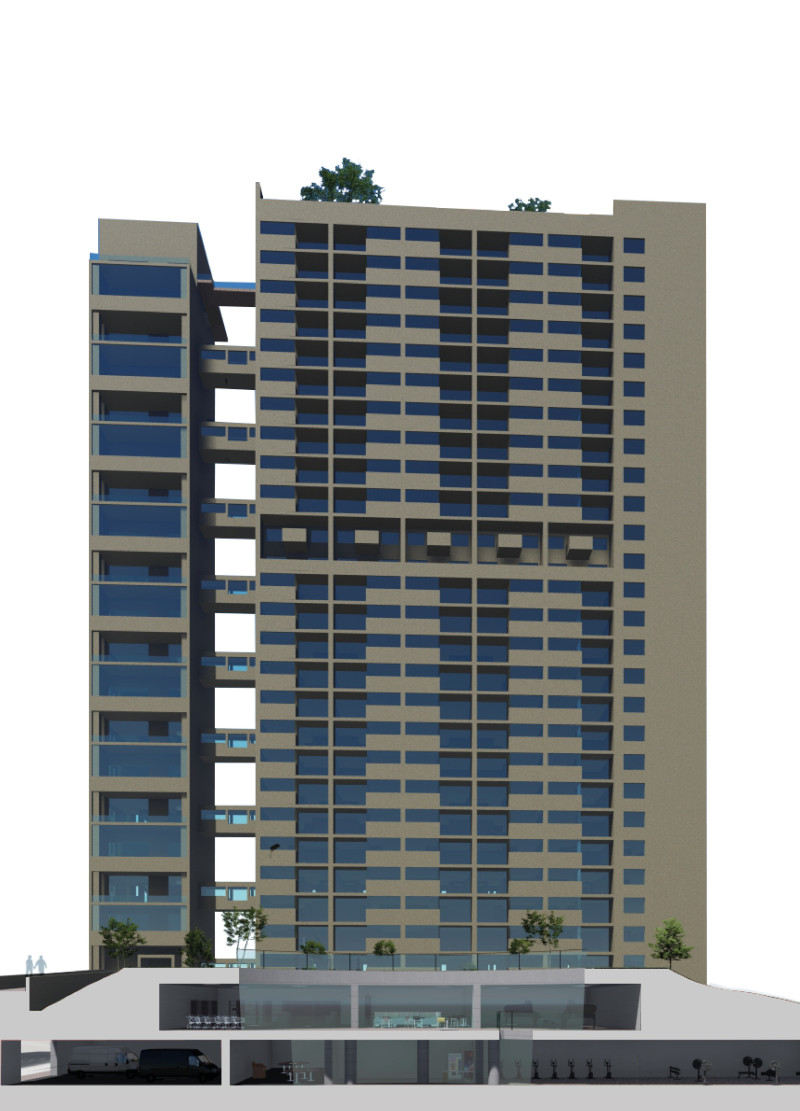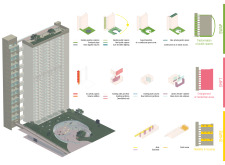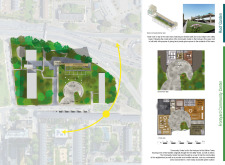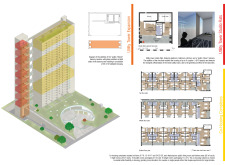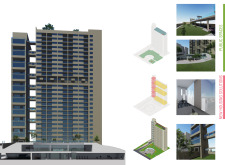5 key facts about this project
The architecture of the Balfront Community Tower integrates communal spaces with private living areas, fostering a sense of connection among residents. It emphasizes the importance of social interaction while providing quiet personal retreats. The design features a series of modular units arranged vertically, maximizing the use of space in a compact footprint. This configuration allows for flexible living arrangements that can adapt over time, addressing the diverse needs of families, singles, and multi-generational households.
Materials play a crucial role in the project, ensuring durability while promoting sustainability. The primary structural element is reinforced concrete, chosen for its robustness and thermal mass properties. Large glass panels define the facade, enhancing natural light penetration while maintaining energy efficiency. These transparent materials not only create visual connections to the outside but also invite nature indoors, blurring the lines between the built environment and its surroundings. Additionally, the inclusion of green roofing materials supports biodiversity and provides outdoor recreational options for residents, showcasing a commendable commitment to environmental considerations in architectural design.
The ground floor serves as an essential communal hub, housing amenities such as a fitness center, a multi-purpose room for gatherings, and children’s play areas. These facilities are designed to promote community interaction, encouraging residents to engage with one another. The careful organization of paths and open spaces fosters an environment that is both playful and inviting, enhancing accessibility within the project while ensuring a harmonious flow of pedestrian movement.
A distinctive feature of the Balfront Community Tower is its focus on the concept of shared living. By integrating co-housing principles, the design offers options for communal living that can be finely tuned to suit the dynamics of contemporary lifestyles. This approach not only helps reduce the overall footprint of the project but also cultivates a sense of belonging and security among residents. The modular housing strategies enable easy customization and transformation, allowing inhabitants to make their spaces truly reflective of their personal needs and preferences.
The architectural layout facilitates seamless connections between private residential units and public areas, promoting a sense of openness while ensuring necessary privacy. Community gardens and landscaped areas are interspersed throughout the site, creating pockets of green that are accessible and beneficial to all residents. These spaces serve as vital elements for relaxation and socialization, further enhancing the living experience.
The Balfront Community Tower distinguishes itself through its innovative design approaches, which prioritize sustainability and community engagement. By focusing on multipurpose spaces and the integration of nature, the project exemplifies how architecture can respond meaningfully to urban challenges. It not only meets the immediate housing demands of the city but also contributes to the overall well-being of its residents.
For those interested in a deeper exploration of this project, there are extensive architectural plans, sections, and design layouts available that provide further insights into the project's distinctive features and thoughtful design solutions. Reviewing these materials can offer a fuller understanding of how architectural ideas align with the functional and social aspirations of modern urban living. Explore the presentation to appreciate the intricacies of the Balfront Community Tower and its contribution to contemporary architectural practices.


